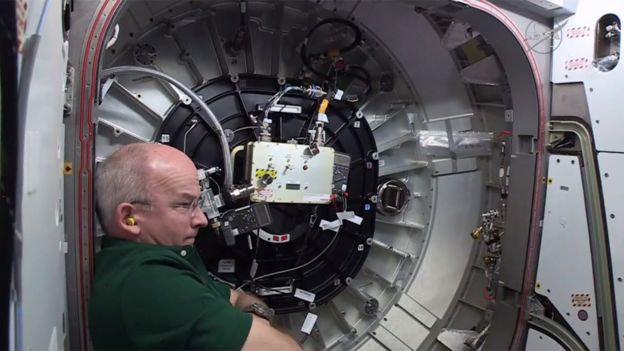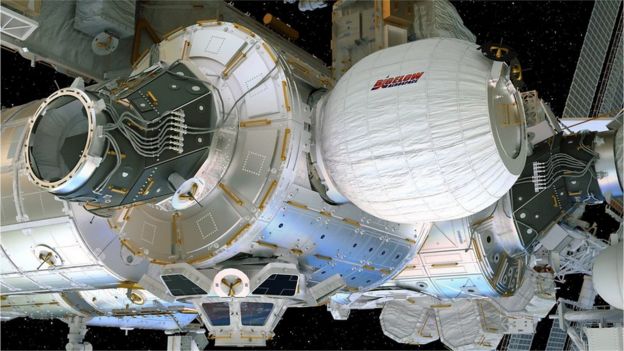The deployment of a new, expandable “room” on the International Space Station was suspended on Thursday when it failed to open up as expected.
Astronaut Jeff Williams began inflating the module, but controllers eventually told him to stand down after 3.5 hours of extremely slow progress.
Installed in a compact form, the vessel is supposed to stretch to 4m in length with a volume of 16 cu m.
But as Williams squirted air into the module, it stretched only a few cm.
Engineers on the ground will now review the data with a view to resuming the expansion on Friday.
The Bigelow Expandable Activity Module is a demonstrator for the type of habitats that may be used to build future orbiting labs.
It is possible such rooms could even make for more living space during the many months it would take humans to travel to Mars.
The Beam was taken up to the station last month and connected to a berthing point on the Tranquility module.
If and when the astronauts can get the new room filled out, it will undergo two years of tests.
Engineers want to know if the structure is as robust as traditional metal modules.
Astronauts will not actually go in the Beam that often, given its experimental nature. And when they do, it will be to have a quick look around to check its integrity. Nothing will be stored in the room, either.
Most of the time, the hatch to the Beam will remain closed and controllers on the ground will monitor its status through a series of embedded sensors. These will track temperature, pressure, radiation and impacts.

The Beam has been produced in a partnership between the US space agency (Nasa) and American entrepreneur Robert Bigelow, who built his fortune on the back of a budget hotel chain.
His ambition now is to take that accommodation experience into orbit.
Although the vessel attached to the space station is only a little bigger than a broom cupboard, the businessman has plans for expandable modules that are substantially bigger.
He hopes to rent these out to anyone who wants to use them for science and even tourism – as hotels in space.
Already, Robert Bigelow has a rocket booked for 2020, to take up his BA-330 model, which, as the designation intimates, has a volume of 330 cubic metres (12,000 cu ft).











